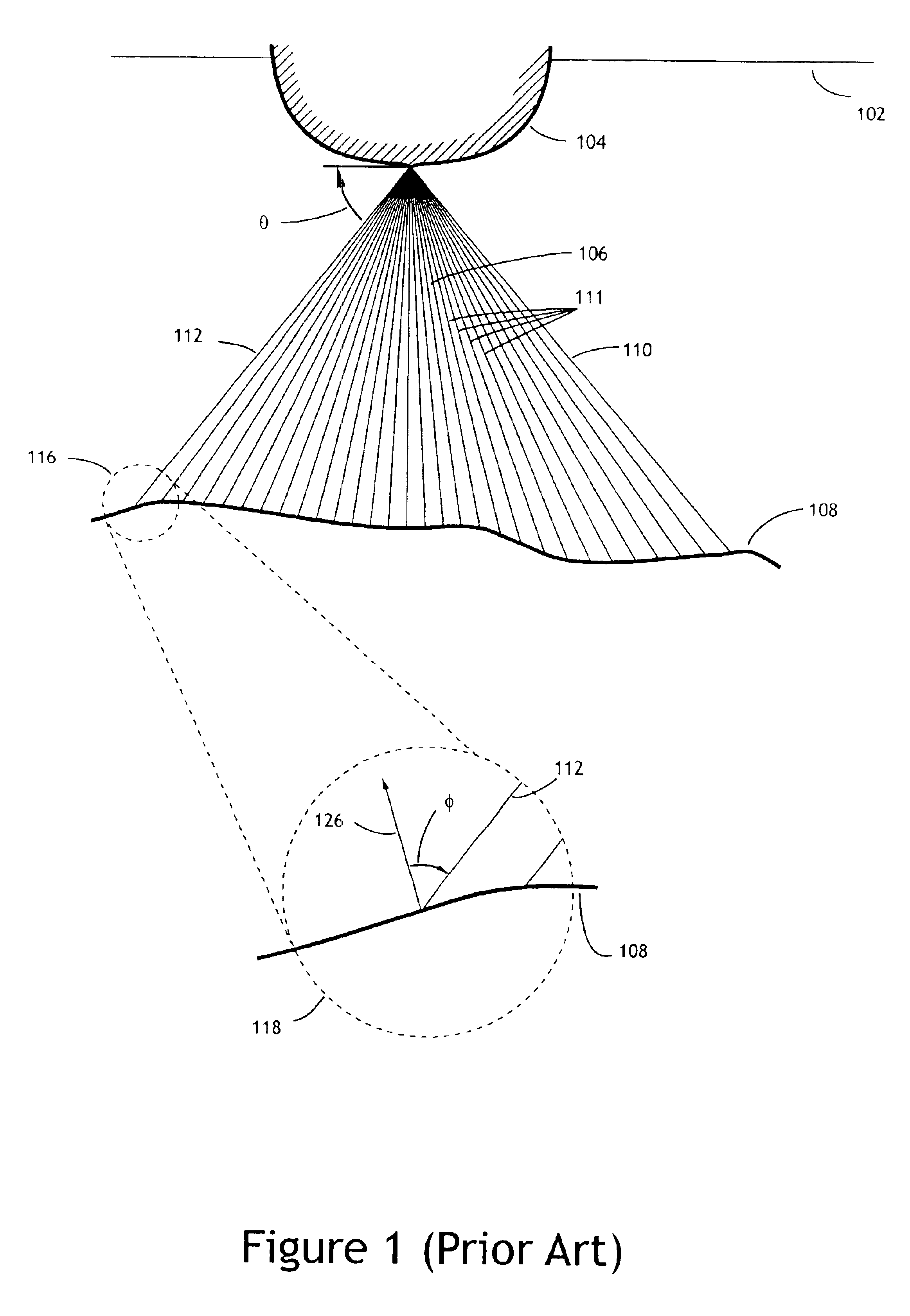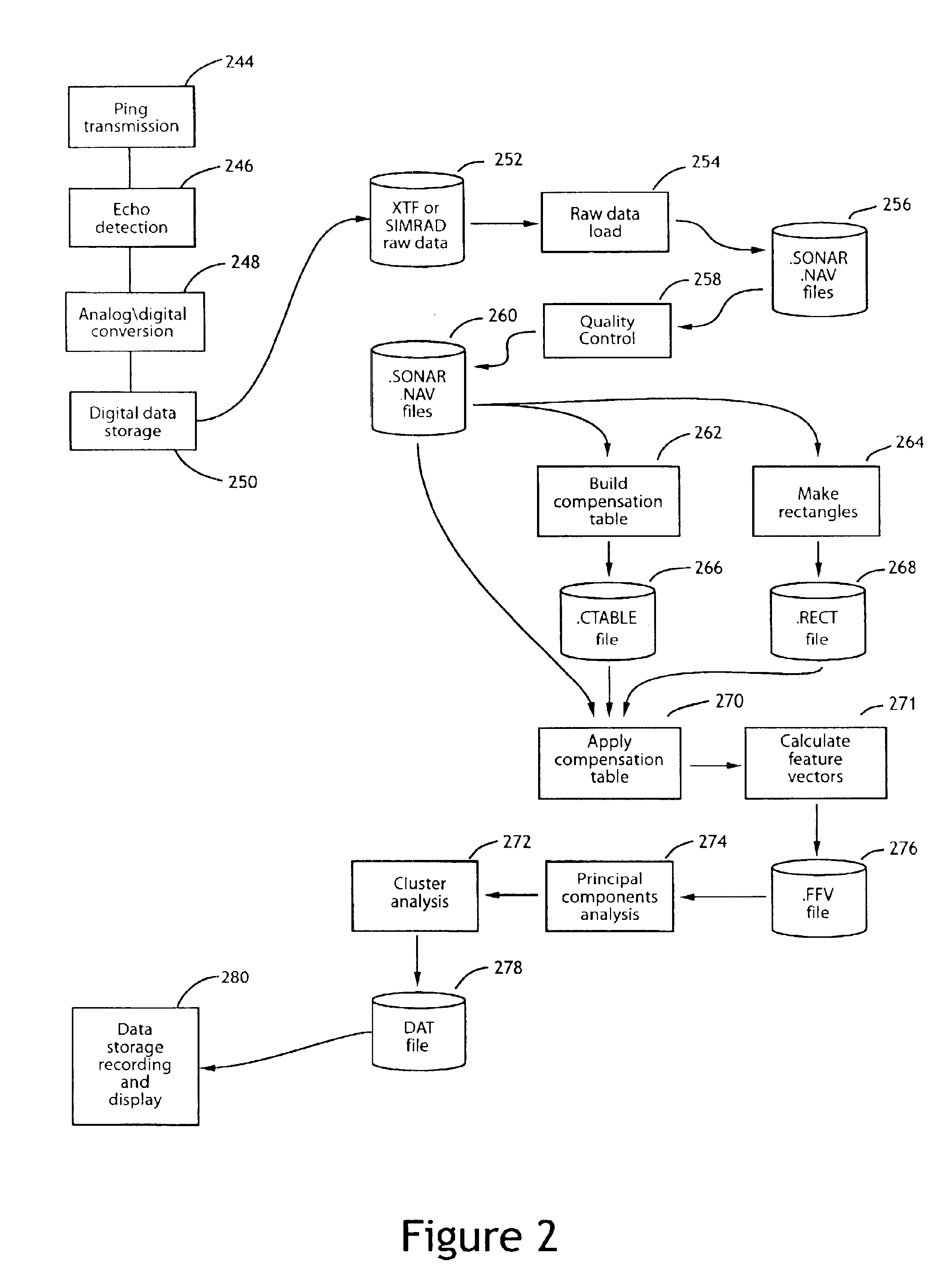Compensation of sonar image data primarily for seabed classification
a sonar image and seabed technology, applied in the field of seabed classification compensation, can solve the problems of not offering a method or methodology for determining the sediment type, not offering a proposal for generating processed data that would adequately, and not always correcting the angle of incidence precisely for both spreading loss and absorption of sound by water, etc., to enhance the processing of echo amplitudes, enhance the image of the seabed, and improve the identification of shipwrecks
- Summary
- Abstract
- Description
- Claims
- Application Information
AI Technical Summary
Benefits of technology
Problems solved by technology
Method used
Image
Examples
Embodiment Construction
FIG. 1 shows schematically a cross-section athwartships of a vessel 104, travelling in a direction into the plane of FIG. 1 and emitting a repeated series of pings from a transmitter (not shown) located in the vicinity of the keel of the vessel 104. Each ping is made up of a short pulse of sound waves that propagate approximately spherically out towards the seabed 108. The surrounding water level is shown as 102.
The transmitter transmits a ping lasting typically between 0.2 and 15 ms. To avoid interference between successive pings, it is not possible to transmit a second ping until the echo from a first ping has returned to the vessel 104. In water of a depth requiring a sound wave to traverse a range of 250 metres, the round-trip time is approximately one third of a second. Typically, soundings are made twice per second.
A detector (not shown), including complementary sampling and data-processing equipment, is located in the vicinity of the transmitter. The analog signals of sound e...
PUM
 Login to View More
Login to View More Abstract
Description
Claims
Application Information
 Login to View More
Login to View More - R&D
- Intellectual Property
- Life Sciences
- Materials
- Tech Scout
- Unparalleled Data Quality
- Higher Quality Content
- 60% Fewer Hallucinations
Browse by: Latest US Patents, China's latest patents, Technical Efficacy Thesaurus, Application Domain, Technology Topic, Popular Technical Reports.
© 2025 PatSnap. All rights reserved.Legal|Privacy policy|Modern Slavery Act Transparency Statement|Sitemap|About US| Contact US: help@patsnap.com



